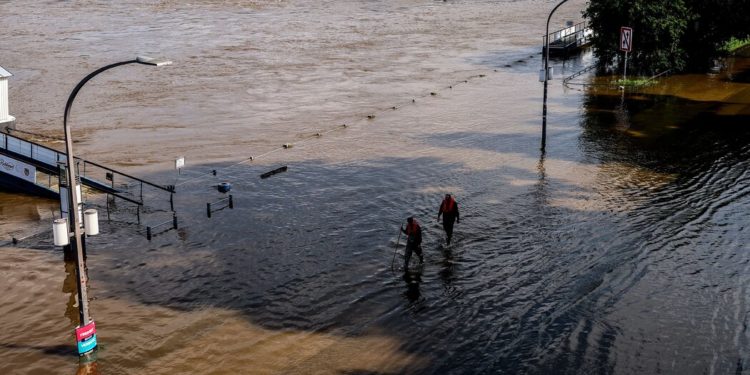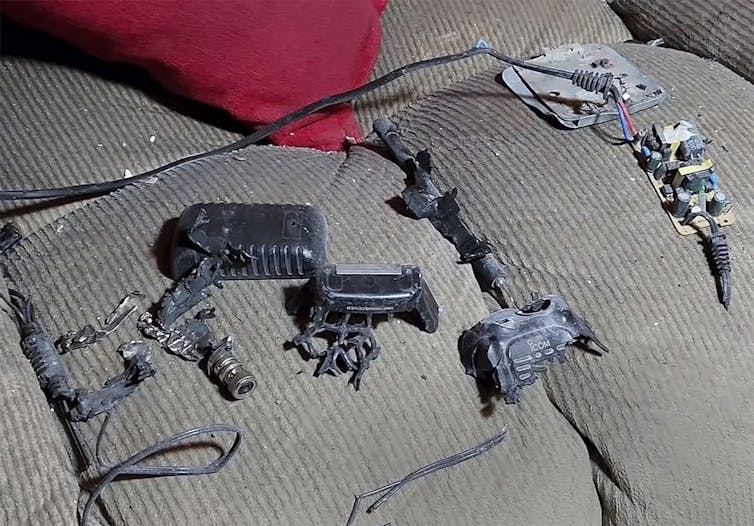
Chad. Vietnam. Austria. The American South.
In very disparate regions of the world, extreme rainfall in recent weeks has killed thousands of people, submerged entire towns, set off landslides and left millions without power. It’s a harbinger of the wild weather events that are a hallmark of climate change, driven by the burning of fossil fuels, and it is highlighting the need to urgently adapt, in rich and poor countries alike.
Bursts of extreme rainfall are making both coastal and riverine flooding more dangerous and unpredictable.
“Extreme events are getting stronger everywhere, so we should expect floods to be bigger regardless of where we are,” said Michael Wehner, a scientist at Lawrence Berkeley National Laboratory. “There is no question that these kinds of floods all over the world are getting worse.”
What’s the climate connection?
Some of the recent deadly floods, like the landslides in Kerala, in southern India, earlier this summer, can be directly attributable to human-induced climate change.
A scientific study, released in August, found that the downpour that caused the landslide was 10 percent heavier because of human-caused climate change.
There are no similar attribution studies yet for the floods of recent weeks. Though some studies are underway, there simply aren’t enough resources to carry out an attribution study for every single event.
Nonetheless, the science is clear: A warmer atmosphere holds more moisture. That can cause bursts of extreme rainfall, on top of other meteorological factors. For instance, Storm Boris, a sluggish, low-pressure system, has dumped five times September’s average rainfall across Europe since the storm began last week. A blast of cold polar air collided with a sweep of warm Mediterranean air dense with water vapor, producing an unusually powerful storm that brought heavy rains and strong winds. As of Wednesday, at least 23 people have died in Austria, the Czech Republic, Poland and Romania, according to Reuters.
In the United States, North and South Carolina are being battered this week by equally rare storms. Some areas recorded 18 inches of rain over 12 hours, an amount so statistically rare it’s considered a one-in-a-thousand-year event.
Typhoon Yagi, one of the region’s most powerful storms, brought rain and winds up to 127 miles per hour across northern Vietnam. At least 143 people have died in the aftermath, including 22 who died following a landslide in the Lao Cai, a mountainous province bordering China. The storm marched on to Myanmar, killing at least 110 more people in flash floods and landslides.
Death tolls are higher in places already at risk
The latest floods come on top of accumulating hazards that have whittled away at people’s ability to cope.
Parts of Northern Nigeria were battered by seven days of nonstop heavy rainfall that caused a dam to burst, killing at least 200 people and submerging half the city of Maiduguri. Local officials told Reuters it was the worst flooding in two decades. The rain came just months after scorching pre-monsoon heat and after years of conflict in the area between Boko Haram militants and the Nigerian government forces. The governor of Borno state said that the floods had displaced more than a million people and that there was a high risk of diseases spreading.
Likewise in Chad, reeling from years of conflict and the influx of refugees from neighboring countries, 341 people have died in flooding in recent days, according to the United Nations.
Extreme weather is exceptionally costly for African governments. On average, African nations are losing 5 percent of their economies because of floods, droughts and heat, according to the World Meteorological Organization. Many are spending up to a tenth of their budgets just managing extreme weather disasters. Many of those extreme events are driven by the emissions of planet-heating greenhouse gases, but Africa is responsible for only a fraction of the world’s annual emissions.
Adaptation is urgent
The latest floods have made it abundantly clear that both rich and poor countries need to invest in shoring up their physical infrastructure and their public policies to minimize the effects of extreme weather.
The United Nations has pressed governments to put in place more early-warning systems, which are relatively inexpensive and potentially effective in saving lives. The U.N. says 101 countries now have early-warning protocols, at least on paper, which is double the number that reported having them in 2015.
There are many feasible measures to reduce the loss of lives caused by flooding. They include giving small amounts of cash to people so they can move out of harm’s way, and putting in emergency water and power systems to prevent the outbreak of disease after floods.
Harder to do, but essential, local officials and disaster management specialists say, is to prevent deforestation and construction in areas that are prone to heavy flooding and landslides. The floods in Kerala were all the more devastating because of widespread deforestation and unplanned development in ecologically sensitive areas.
In wealthy countries like the United States, local governments have invested heavily in expensive infrastructure. North and South Carolina, for instance, both veterans of powerful storms, have spent millions of dollars retrofitting roads to better withstand extreme rainfall and starting to protect natural flood barriers, like wetlands, from development.
By contrast, low-income countries that are already strapped and weighed down by debts, have been less able to maintain their roads, let alone build flood-resilient infrastructure.
“We need to develop critical infrastructure,” said Olasunkanmi Habeeb Okunola, an urban planner from Nigeria who is working as a visiting scientist at United Nations University’s Institute for Environment and Human Security. “If you get that right, to some extent, you can lessen the impact of climate change.”
There is little doubt that climate change is making weather wilder and more erratic. That requires preparing for the unexpected.
“We don’t know exactly when or which type of event will come,” said Diana Urge-Vorsatz, a professor at Central European University and vice chair of the Intergovernmental Panel on Climate Change. “Unfortunately there’s no question that more severe events are coming.”
The post Floods Wreak Havoc Across Four Continents appeared first on New York Times.




















